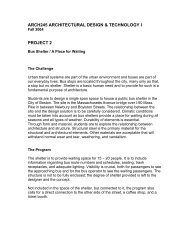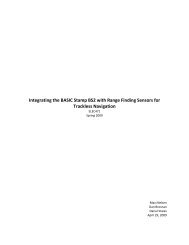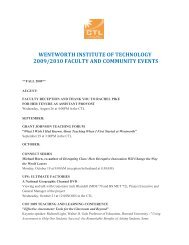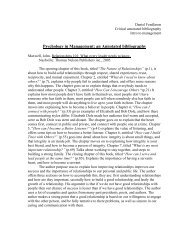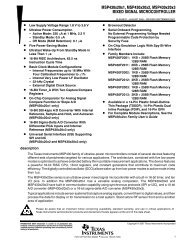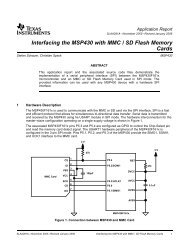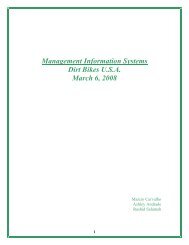Analog Circuit Design Laboratory Report - MyWeb at WIT ...
Analog Circuit Design Laboratory Report - MyWeb at WIT ...
Analog Circuit Design Laboratory Report - MyWeb at WIT ...
Create successful ePaper yourself
Turn your PDF publications into a flip-book with our unique Google optimized e-Paper software.
The next configur<strong>at</strong>ion, with a 10-kΩ load resistor connected to pin 6, illustr<strong>at</strong>es<br />
sourcing current. Sourcing current used the positive supply to feed the output and an<br />
additional source is connected to the non-inverting pin 3. Isupply(+) is equal to the sum of<br />
the neg<strong>at</strong>ive supply current and the current; see Equ<strong>at</strong>ion 2. This s<strong>at</strong>isfied Kirchoff’s<br />
Current Law.<br />
Isupply(+) enters into the op-amp, and I supply(-) and the load current, IL, exit the op-<br />
amp. The circuit was broken so th<strong>at</strong> current measurements could be taken for Isupply(-), Iout<br />
and Isupply(+). The sum of Isupply(-) equal to 0.6mA and IL equal to 1.44mA was within 1.4%<br />
of the direct measurement of Isupply(+) equal to 2.13mA. The polarity of the source current<br />
proved th<strong>at</strong> the op-amp was sourcing current to the load as it was positive and equal to<br />
+Vs<strong>at</strong>.<br />
Next, the circuit was configured to sink current. With the 5V source <strong>at</strong> the<br />
connected to the inverting pin 2, the output became -Vs<strong>at</strong>, since voltage follows from<br />
higher to lower potential, the load current is drawn into the op-amp. The op-amp was<br />
then sinking an IL equal to 1.37mA and using the measured value Isupply(+) <strong>at</strong> 0.6mA from<br />
this circuit, to calcul<strong>at</strong>e an Isupply(-) equal to 2.31mA from Equ<strong>at</strong>ion 2.<br />
Based on the sum of Isupply(+) and Iout when compared to the direct current reading<br />
of Isupply(-) provided a percent difference of 12.26%, which is not within the excepted<br />
10%. Sinking current to the load did provide a –Vs<strong>at</strong>.<br />
This exercise was also simul<strong>at</strong>ed on PSpice, see Figure 10. This was devised with<br />
simul<strong>at</strong>ed components and adjacent voltage supplies connected by assigning the same<br />
name of the source <strong>at</strong> the inputs. The results of PSpice were close to those measured in<br />
17



